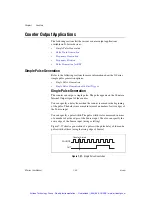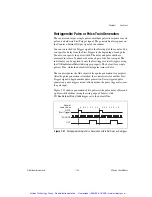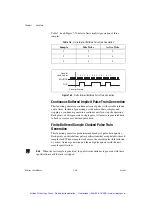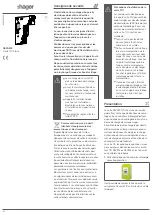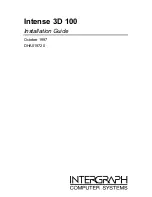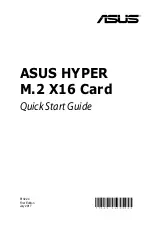
Chapter 7
Counters
©
National Instruments
7-21
X Series User Manual
Again the meas
u
rement time for the one co
u
nter meas
u
rement is lowest b
u
t
the acc
u
racy is lower. Note that the acc
u
racy and meas
u
rement time of the
sample clocked and two co
u
nter large range are almost the same. The
advantage of the sample clocked method is that even when the freq
u
ency to
meas
u
re changes, the meas
u
rement time does not and error percentage
varies little. For example, if yo
u
config
u
red a large range two co
u
nter
meas
u
rement to
u
se a divide down of 50 for a 50 k signal, then yo
u
wo
u
ld
get the acc
u
racy meas
u
rement time and acc
u
racy listed in Table 7-3. B
u
t if
yo
u
r signal ramped
u
p to 5 M, then with a divide down of 50, yo
u
r
meas
u
rement time is 0.01 ms, b
u
t yo
u
r error is now 0.1%. The error with a
sample clocked freq
u
ency meas
u
rement is not as dependent on the
meas
u
red freq
u
ency so at 50 k and 5 M with a meas
u
rement time of 1 ms
the error percentage is still close to 0.001%. One of the disadvantages of a
sample clocked freq
u
ency meas
u
rement is that the freq
u
ency to be
meas
u
red m
u
st be at least twice the sample clock rate to ens
u
re that a f
u
ll
period of the freq
u
ency to be meas
u
red occ
u
rs between sample clocks.
•
Low freq
u
ency meas
u
rements with one co
u
nter is a good method for
many applications. However, the acc
u
racy of the meas
u
rement
decreases as the freq
u
ency increases.
•
High freq
u
ency meas
u
rements with two co
u
nters is acc
u
rate for high
freq
u
ency signals. However, the acc
u
racy decreases as the freq
u
ency
of the signal to meas
u
re decreases. At very low freq
u
encies, this
method may be too inacc
u
rate for yo
u
r application. Another
disadvantage of this method is that it req
u
ires two co
u
nters (if yo
u
cannot provide an external signal of known width). An advantage of
high freq
u
ency meas
u
rements with two co
u
nters is that the
meas
u
rement completes in a known amo
u
nt of time.
•
Meas
u
ring a large range of freq
u
encies with two co
u
nters meas
u
res
high and low freq
u
ency signals acc
u
rately. However, it req
u
ires
two co
u
nters, and it has a variable sample time and variable error %
dependent on the inp
u
t signal.
•
Again, the meas
u
rement time for the one co
u
nter meas
u
rement is
lowest, b
u
t the acc
u
racy is lower. Note that the acc
u
racy and
meas
u
rement time of the sample clocked and two co
u
nter large range
are the same. The advantage of the sample clocked method is that even
when the freq
u
ency to meas
u
re changes, the meas
u
rement time and
error % does not. For example, if yo
u
config
u
red a large range
two co
u
nter meas
u
rement to
u
se a divide down of 50 for a 50 kHz
signal, then yo
u
wo
u
ld get the acc
u
racy meas
u
rement time and
acc
u
racy listed in table 7-3. B
u
t if yo
u
r signal ramped
u
p to 5 MHz,
then with a divide down of 50, yo
u
r meas
u
rement time wo
u
ld be
0.01 ms, b
u
t yo
u
r error wo
u
ld now be 0.001%. The error with a sample
Artisan Technology Group - Quality Instrumentation ... Guaranteed | (888) 88-SOURCE | www.artisantg.com
























